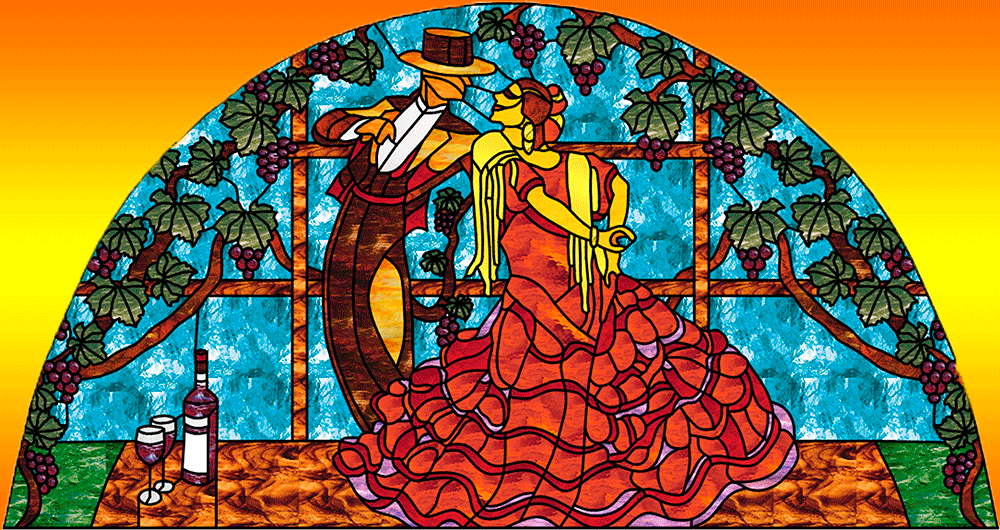As universal as the blues, as epic as opera, as unpredictable as jazz, and as lyrical as ballet. The result is an adventure, with extreme dance, searing vocal artistry and exhilarating guitar.
Flamenco is the music of the gypsies of southern Spain (Andalusia). About a thousand years ago the gypsies started their movement from northern India, through the Persian Empire and northern Africa, and into Europe. They exchanged and absorbed musical ideas with the people in the lands in which they traveled. Eventually, many of these gypsies settled in southern Spain,where they formed a rich ground for their musicality, fertilized by hundreds of years of high culture. There, not only Moorish, but also Judaic, Catholic and local musical influences mixed and it bears a strong resemblance to Arabic music.
However, this was a bad time as Columbus had sailed on a journey to the Indies. Also, the victory over the Moors had gone to the heads of the Spaniards. They began to request that everyone speak proper Spanish, become Catholic, and in general, to behave in a civilized manner. This request applied specifically to the Gypsies who were famous for having loud parties with fights and even murders. The Gypsies refused to speak proper Spanish, and spoke in their own language, Calo. The Gypsies often took on dangerous jobs such as working in the mines, and they lived in caves.
They were basically the oppressed class. They had parties in secret and often were invited to perform the devious music at the parties of the rich. Often the songs were about the injustice done to them by the upper class, but the rich could not understand what the gypsies were singing anyway. As time went on, the Spaniards lightened up a bit and the Gypsies adapted to life under their influence. More people took an interest in their music. Locals adopted and interpreted some of this music, and at the end of the 19th century, Flamenco settled into the form known and performed today. Ironically, Flamenco only gained mass popularity when the non-gypsies started to perform it.
Flamenco music is one of the most technically demanding, yet least understood musics in the world today. Part of the reason for this is the fact that the true Flamenco artist generally finds him or herself uncomfortable in a recording situation and is not able,or in fact refuses, to produce. The preferred venue is the "Juerga", an authentic Flamenco atmosphere usually occurring at random, in any location, with much to drink, and with only a few other Flamencos and "Aficionado" present. The juerga atmosphere is extremely difficult to record, as the greatness of the music sometimes occurs sporadically, and can be destroyed in a second by what may be perceived as an inappropriate word or action. The challenge, then, is to describe this feeling, this "duende" that all great Flamencos possess, as it affects their music, language, dance, and culture, and translate it with the fiery passion and accolades it deserves.
Today Flamenco has gained international interest and popularity. Singing,dancing and playing the guitar, either together or separately, have ignited much curiosity. Flamenco is a beautiful art form. When treated with integrity it can be highly expressive and communicative, on the most profound levels.
